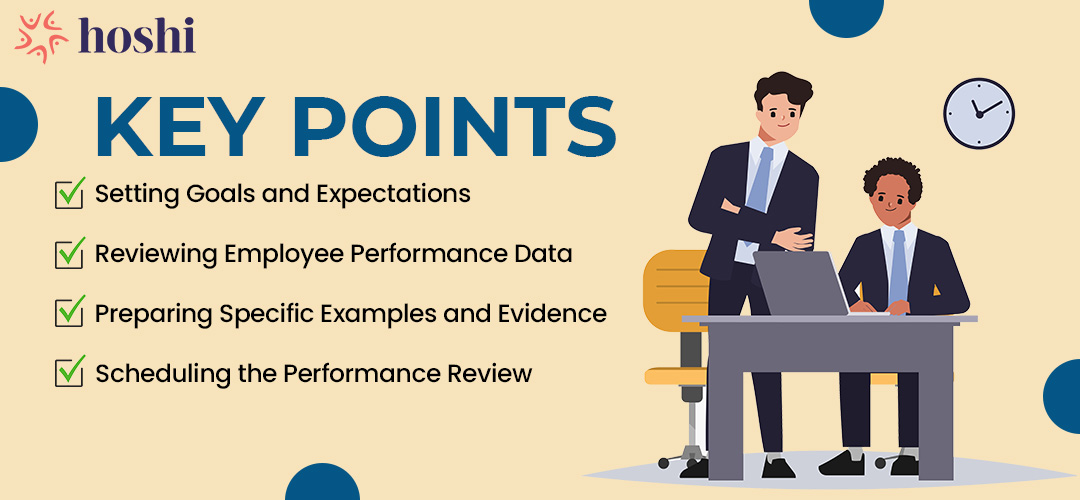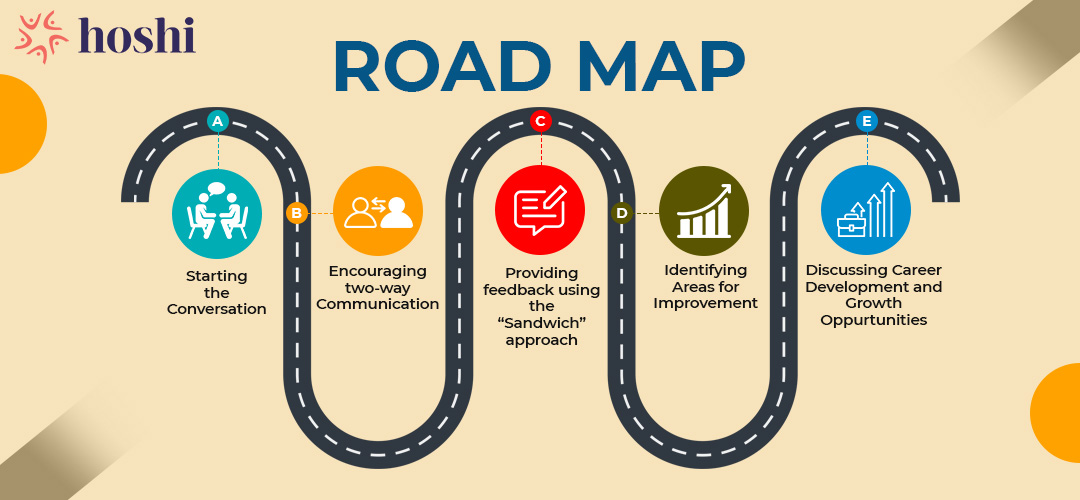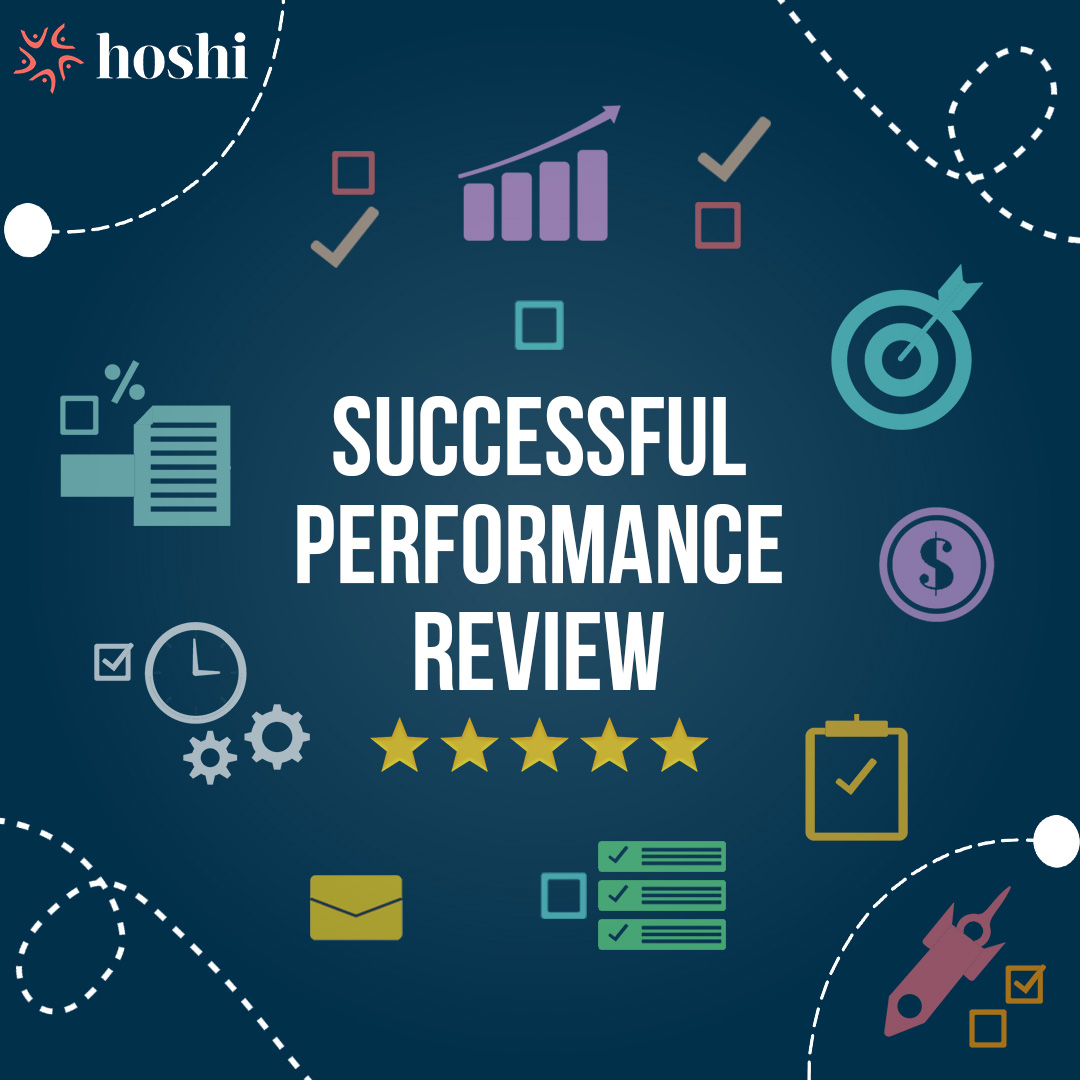5 Steps to Successful Performance Review and Feedback Sessions
Introduction:
Employee performance assessments and feedback sessions are critical for your organization's growth and development. Effectively conducting them can assist you in identifying areas for growth, recognising accomplishments, and promoting employee engagement and job satisfaction.
However, many managers and employees are anxious and stressed about performance reviews. This is why approaching these sessions with a clear and structured plan, as well as an awareness of their purpose and advantages, is critical.
To begin, it is critical to identify the review session's goals and expectations. Setting explicit performance metrics, specifying the scope of the review, and providing a timeframe for future assessments are all examples of this.
It is critical to provide constructive input that is explicit, measurable, realistic, relevant, and time-bound throughout the review session. Highlighting areas of strength and making suggestions for progress, as well as addressing any performance difficulties or concerns, can all be part of this.
Finally, developing a plan for follow-up and ongoing support, such as setting goals and providing professional development resources, is critical.
By adhering to these recommendations and treating employee performance reviews and feedback sessions with care, you can foster a pleasant and productive workplace culture that encourages growth and development for both people and the organisation as a whole.
What the blog post will cover
Why are performance reviews important? This section will discuss the significance of conducting frequent performance evaluations and feedback sessions to help employees grow and improve while also ensuring that they are following company goals and expectations.
Preparing for the review: This section will go through how to prepare for a performance review, such as developing objectives and goals, obtaining data and feedback, and determining an acceptable time and location.
Conducting the Review: In this section, we'll go over how to go about conducting the review, including how to organise the conversation, give helpful criticism, and set specific goals and objectives for the employee.
Following up: This part will discuss the necessity of following up after a performance evaluation to ensure that goals are reached, progress is achieved, and any new concerns that have surfaced are addressed.
Best practices: Finally, the blog post will share some best practices for conducting effective performance reviews and feedback sessions, including tips on how to create a positive and productive environment, how to encourage open and honest communication, and how to maintain confidentiality and respect for the employee.
How to prepare for the Performance Review

A performance review can be an effective tool for motivating and developing employees. However, preparing for a performance review is critical to ensuring that the review is successful.
A. Setting goals and expectations
The first step in preparing for a performance review is setting goals and expectations. This involves setting clear and measurable objectives for the employee to achieve over a given period. The employee will know what is expected of them and how their performance will be assessed by creating these goals. The organization's goals must be in line with the established objectives, and this must be ensured.
B. Reviewing employee performance data
The second step is reviewing employee performance data. This includes reviewing the employee's job description, past performance reviews, and any other relevant performance data. This review helps to identify areas of strength and areas that need improvement.
C. Preparing specific examples and evidence
The third step is to prepare specific examples and evidence that support the employee's performance. This evidence should be specific and measurable, indicating the employee's achievements or shortcomings. For instance, if an employee has met or exceeded their sales target, this should be documented and included in the performance review. On the other hand, if an employee has been consistently missing deadlines, this should also be documented with specific examples.
D. Scheduling the performance review
The performance review must be scheduled in advance to give both the employee and the manager enough time to prepare. The employee should be informed enough time in advance to prepare for the performance review, which should be scheduled in advance. The review should also be scheduled when neither the employee nor the manager will be preoccupied with other urgent matters.
How do I conduct the Performance Review for my company?

As a seasoned HR professional, conducting performance reviews has become second nature to me. I've discovered over the years that good communication and a positive outlook can really help the performance review process go smoothly.
A. Starting the conversation
It is critical to begin the performance review on a positive note. I like to begin by acknowledging the employee's hard work and contributions to the company. This sets a positive tone for the conversation and shows the employee that their efforts are valued.
B. Encouraging two-way communication
During the performance review, it's important to encourage two-way communication. This includes not only giving the employee feedback, but also listening to their ideas and opinions. I find that asking open-ended questions and actively listening to their responses helps to foster a positive and productive conversation.
C. Providing feedback using the "sandwich" approach
When providing feedback, I like to use the "sandwich" approach. This entails starting with a compliment, moving on to helpful criticism, and capping it off with another compliment. This helps to soften any negative feedback and allows the employee to see areas where they are excelling, as well as areas for improvement.
D. Identifying areas for improvement
It's important to be specific when identifying areas for improvement. Rather than making broad statements, provide specific examples of where the employee can improve. This enables the employee to understand precisely what they need to improve on.
E. Discussing career development and growth opportunities
Finally, the performance review is an excellent opportunity to discuss career development and growth opportunities. This can include discussing areas where the employee would like to grow and any training or development opportunities that the company can provide. By showing an interest in the employee's career goals, you can help to foster a sense of loyalty and commitment.
My personal ways of providing the feedback:

Providing feedback is an essential component of the performance review process. As an HR professional, it's important to provide constructive feedback that is specific and actionable.
Use language that is supportive and positive rather than critical or negative. Encourage employees to reflect on their performance and ask them to provide their own feedback.
Be specific when giving feedback. Use concrete examples to illustrate your points and provide actionable steps for improvement.
For example, instead of saying "I noticed that you frequently interrupt people during meetings." Say "wait for the speaker to complete there speech and then keep your thoughts"
Always make sure your feedback should not diminish or criticise employees; rather, it should be used to help them improve. Employees can achieve their goals and contribute to the success of the company by receiving specific and useful feedback.
My personal steps that I ask all my HR to follow for Wrap-Up and Follow-Up.

After conducting the performance review, it's important to summarize the key points discussed and set clear goals and expectations for the next performance review.
A. Summarizing the performance review
1. Recap the key points of the performance review, including strengths and areas for improvement.
2. Highlight the employee's great achievements and the ways in which they have benefited the company.
3. Acknowledge the challenges they faced and discuss strategies to overcome them.
B. Setting goals and expectations for the next performance review
1. Collaborate with the employee to set clear and measurable goals for the next performance review period.
2. Discuss how their goals align with the organization's objectives.
3. Agree on specific actions and timelines to achieve those goals.
C. Providing resources for employees to improve their performance
1. Share relevant resources, such as training programs, mentorship opportunities, or job shadowing.
2. Provide feedback on how the employee can improve their skills and knowledge.
3. Encourage them to look for chances to develop themselves, and offer ongoing support and direction.
By following these steps highlighted here, you can make sure that the employee's growth and development, as well as the organization's overall goals, are supported during the performance review.

Conclusion:
employee performance evaluations and feedback sessions are essential for the expansion and development of the organisation as well as the employees. Managers can effectively communicate expectations, pinpoint areas for improvement, and offer career development opportunities to employees by conducting routine, well-planned performance reviews.
Managers should promote open and honest communication and offer concrete examples and improvement strategies.
Managers should prepare in advance by establishing goals and expectations, reviewing employee performance information, and scheduling the review in advance in order to conduct effective reviews. Managers should initiate the discussion, promote two-way communication, and offer feedback using the "sandwich" method during the review. Managers should also point out areas for development and talk to staff members about opportunities for professional advancement.
In summary, performance reviews are an opportunity for managers to recognize employee contributions, provide feedback, and facilitate employee growth and development. By conducting regular and effective performance reviews, organizations can improve employee engagement, retention, and ultimately, overall performance.


payrolez.ingenious@gmail.cim
One of the best blog ever seen... keep sharing like this payroll software in India